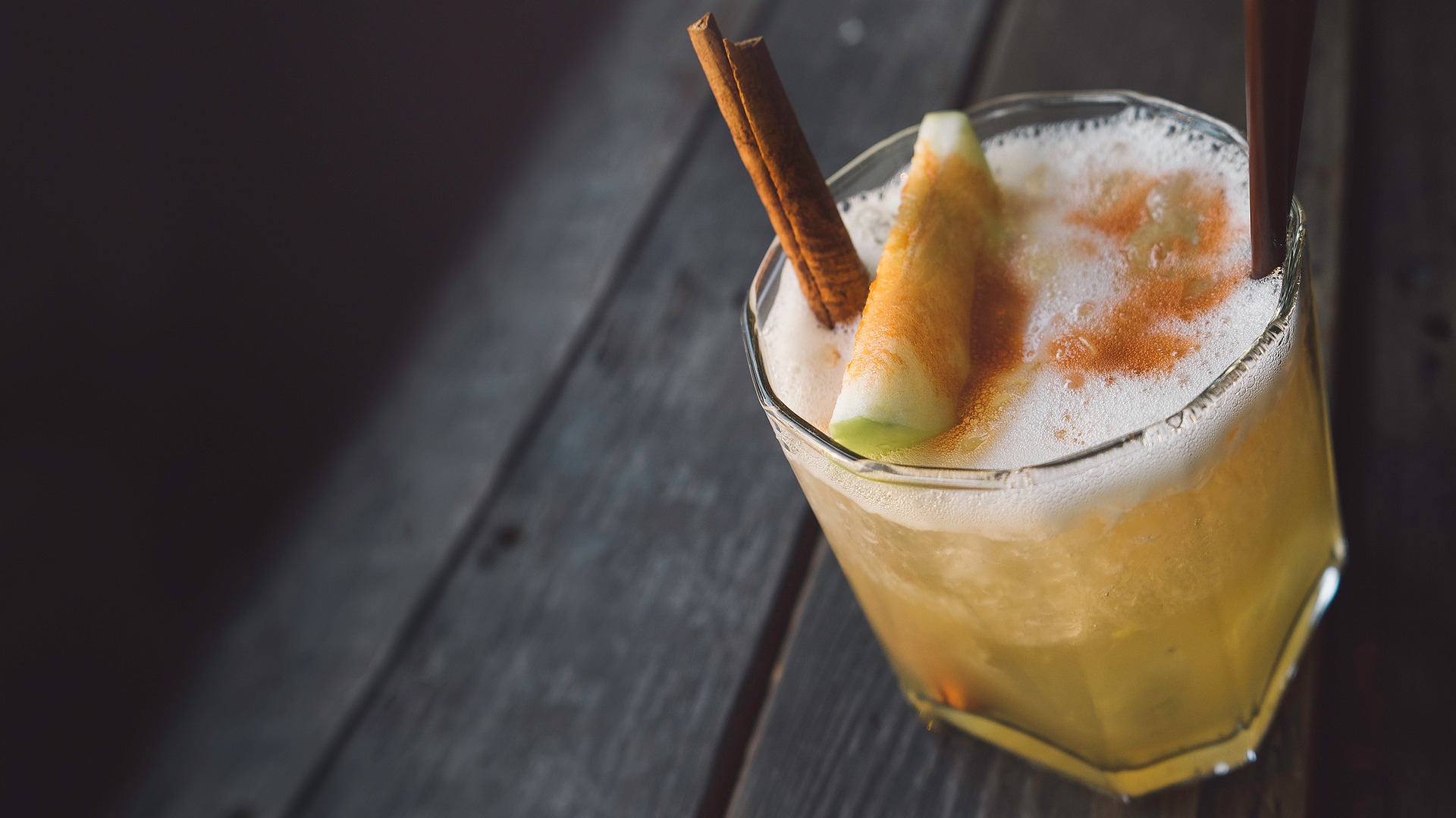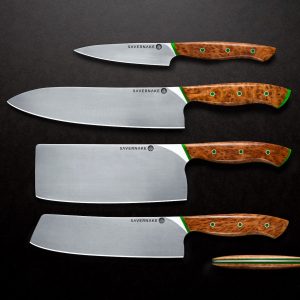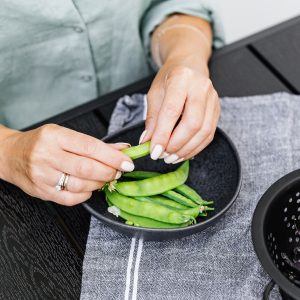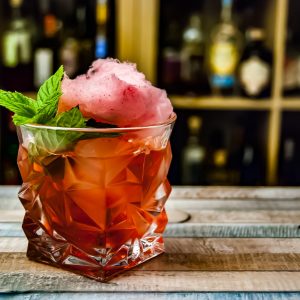GoShindig is reader-supported. We may earn affiliate commissions if you purchase through our links.
There are many types of glasses that can be used to serve alcoholic drinks. You can be sure that there is a perfect glass for every cocktail, from beer and wine to complex mixed drinks like margaritas and hurricanes.
This guide is for you if you have ever felt overwhelmed by all the glasses in professional bars.
Wine glasses
Wine glasses are designed with the same level of precision and complexity as winemaking. Wine glasses are stemmed because the temperature is an important factor in serving wine. The wine glass shape delivers the wine to your palate in a way that highlights the wine’s complex layers and flavors. A wine glass’s rim width is also designed with different wine styles in mind.
Red Wine Glass
Red wine glasses have larger bowls than white wine glasses. They may be longer and wider than white wine glasses. Red wines tend to be thicker and have bolder flavors. This larger bowl size allows for intense aromas and flavors to be delivered to the palate and nose. The bowl’s widest portion tapers to a narrower edge in many cases. This helps direct the aroma into the nostril with each sip.
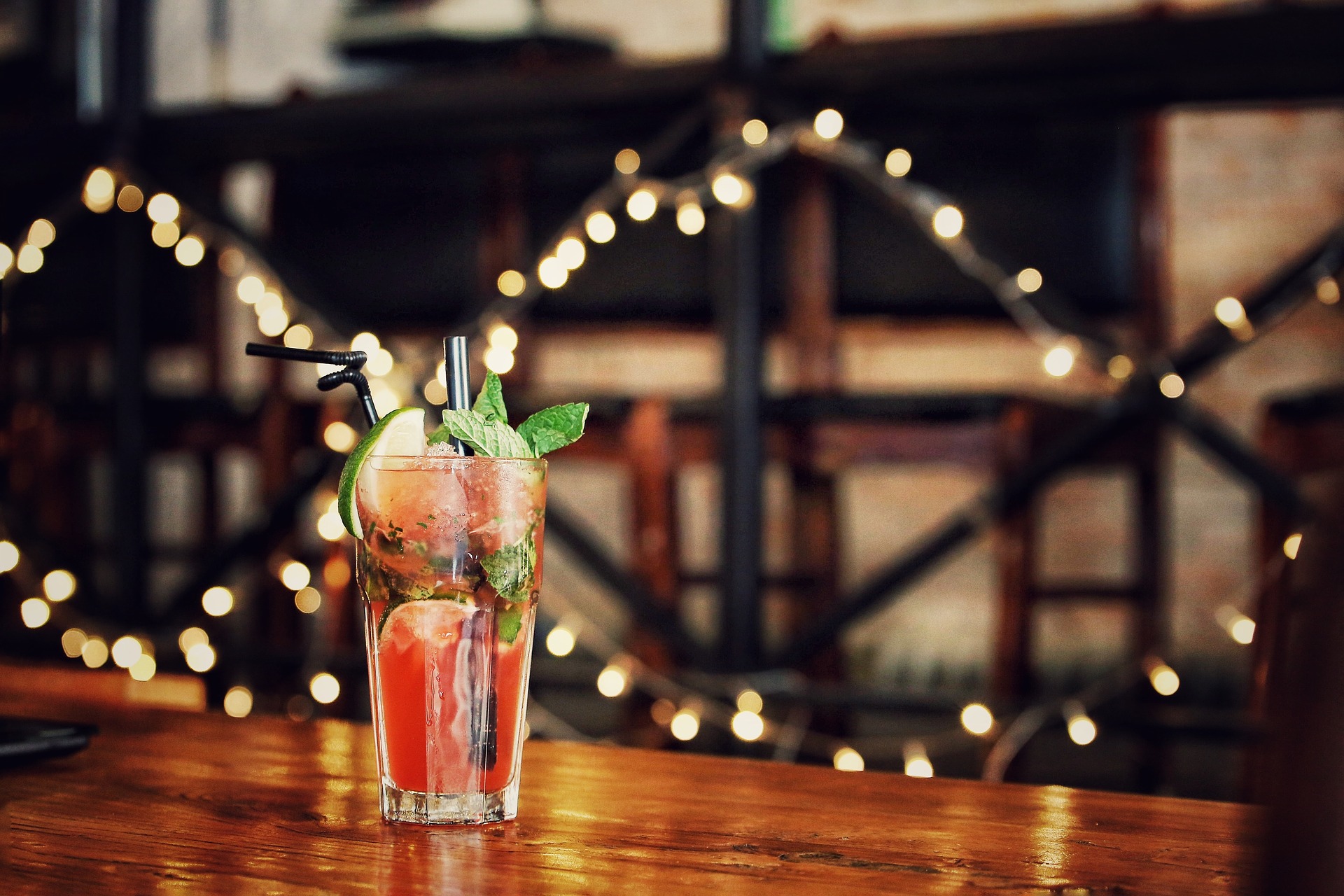 White Wine Glass
White Wine Glass
Although white wine glasses look very similar to red wines, the widths of the bowls and rims of white wine glasses are much smaller than those of red wine glasses. This is because there is less air between the wine and the top, but white wines have lighter flavors and aromas and don’t require as much space for mixing and mingling.
Port and Sherry Glass
Port and sherry, dessert wines, are sweeter than white and red wines. They are therefore well deserving their own glasses. These glasses direct the wine to the back of your mouth, making it less overwhelming. The glasses are also smaller, which encourages the bartender not to pour too much. Port and sherry have higher alcohol volumes than red and white wines. It is easy to overserve them.
Champagne glasses
Champagne glasses are distinguished from red and white wines glasses by their narrower and taller bowls and inwardly tapered rims. This helps preserve the champagne’s crisp carbonation and prevents it from becoming flat. Champagne glasses, like their wine glasses cousins, have long stems to protect the drink from the hot hands.
Champagne glasses can even have an indistinct notch at their bottom to encourage the continuous rise of bubbles, which is characteristic of a sparkling glass of champagne.
Champagne Flute
Champagne flutes are long, straight, and slim. This design is a great addition to formal events. Be careful not to fill the glass too full! Champagne flutes and champagne glasses are not meant to be filled to the brim. Allow the aroma to have some space in the drinker’s nostrils.
Champagne Tulip
The champagne tulip glasses are preferred by some people over the champagne flute due to their larger bowls. Champagne tulips are similar to red wine and white wine glasses in that they allow champagne aromas to mingle and eventually make their way to the nose of the drinker, creating a richer experience.
Champagne Saucer
Champagne saucers, also known as champagne coupes, are a throwback to the early 1900s when champagne was served in a wide and shallower vessel. Champagne saucers were a great choice for serving champagne as they contained more syrup at that time than modern beverages. The champagne saucer, with its wide rim, and bowl base, is not the best way to preserve the crisp, bubbly aromas of champagne today.
Coupe Glass
Another name for the champagne saucer is the couple glass. Although bar blenders for the coupe glass is no longer used for champagne, some cocktail connoisseurs have adopted it as a vessel to serve craft cocktails like the Side Car, Aviation, and the Martinez.
Nick and Nora Glass
Nick and Nora glasses, a specialty alternative to the coupe wine glass, are a popular choice for bartenders. These glasses are bell-shaped and look like a small wine glass. They can hold between 3 and 6 ounces.
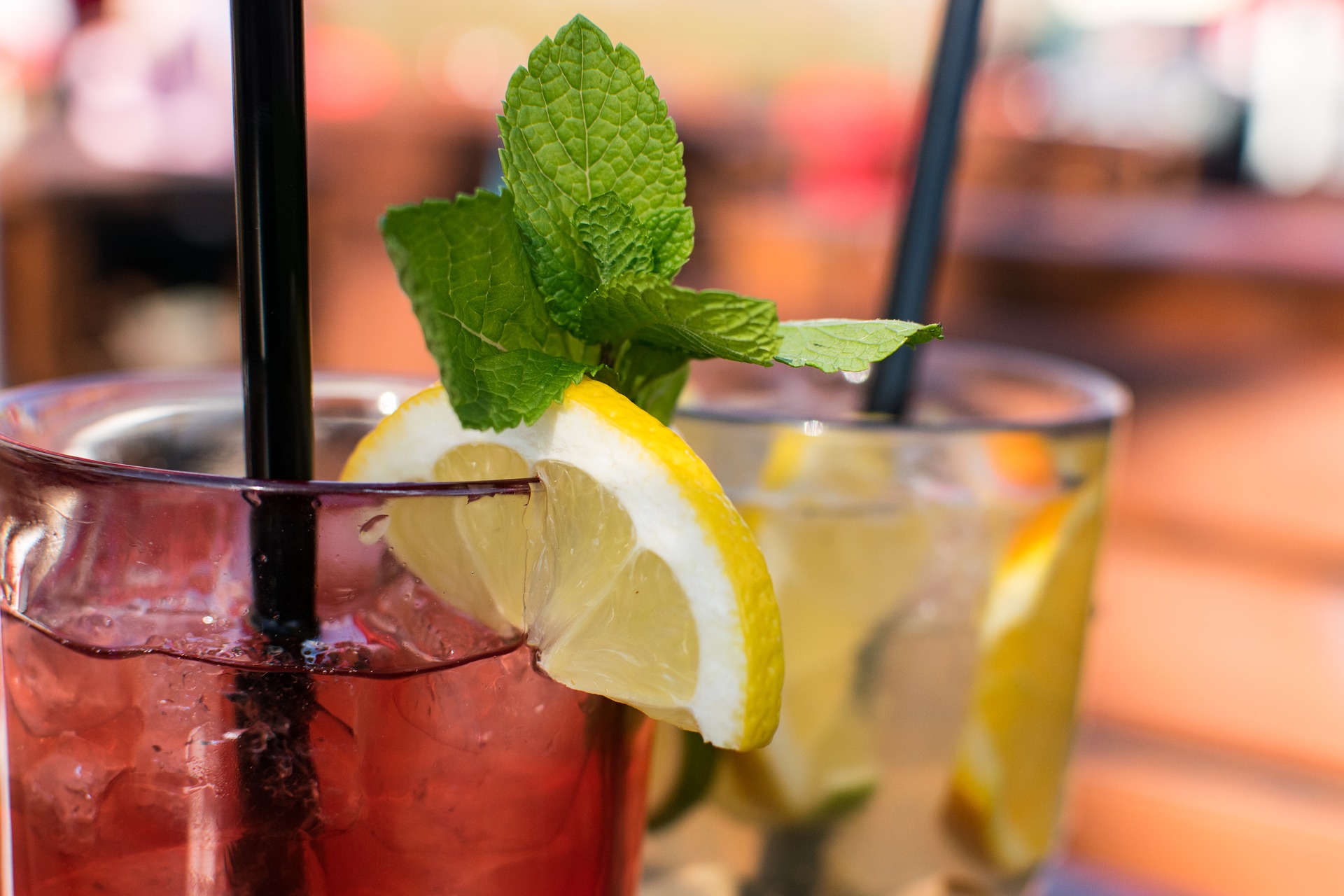 Beer Glasses
Beer Glasses
Pint Glass
Pint glasses are the most common way to serve beer. You can pour the beer into pint glasses even if it is in cans or bottles. This will allow your guests the opportunity to taste the beer without having to worry about the metallic taste that can often be associated with drinking from a bottle or can. Pint glasses are wide-brimmed, which is ideal for holding the head of a well-poured beer. They also tend to be thick and sturdy.
Stein Glass
Steins were originally made of stone, but they are now available in glass for everyday use. With its handle and hinged lid, the stein glass is separate from the pint glasses. Sometimes, it can be larger. A tribute to beer tradition, steins often come in half-or one-liter sizes (roughly equivalent size to a pint glass or two-pint glasses).
Pitcher
A pitcher can be used to serve multiple glasses of beer, punch, or sangria at one table. A pitcher is a great way to serve lagers or other light beers. It has a handle and a lip that can be used for pouring. Pitchers are ideal for large gatherings such as sporting events, where several people can enjoy the same drink.
Cocktail glasses
The term “cocktail glasses” could refer to either a specific type of glassware, such as the martini or cocktail glass. Here are some other types of glasses that you might encounter while studying the art and craft of mixed drinks.
Highball glass
These glasses are taller than normal and are made to hold larger volumes of cocktails that have a high mix-to-liquor ratio. A highball glass is suitable for drinks as simple as vodka with fruit juice, or soft drinks. However, there’s nothing “simple” about highball glasses’ clean presentation. Cocktails are usually made in the glass by placing the shaken ingredients on top of ice.
Collins Glass
Collins glasses are often used as an alternative to highball glasses. They can be used as vessels for “highball” cocktails. A generous amount of non-alcoholic mix, a shot or two liquor and ice will suffice. A Collins glass will look taller and wider than a highball one. They are almost identical, other than that.
Zombie or Chimney Glass
Similar to the Collins glass, chimney glasses (or zombie glasses) are tall cylindrical glasses that have a straight side and are perfect for long mixed drinks.
Low-cost Glass
The lowball glass, as its name suggests, is a shorter version than its counterpart, highball. This glass is used for drinks with fewer non-alcoholic mixers. This glass’s bottom is usually wide and sturdy. It can be used to mix mint or other herbs into cocktails such as mojitos.
Martini Glass
Rarely is glass so versatile that it can form the base of collections all over the globe. But martini glasses, like shot glasses with fun stems and colorful stems, are a favorite among cocktail lovers. Martini glasses have a narrow rim and a conical bowl that allows the drinker to fully appreciate the liquor’s aromas.
Fishbowl
Sometimes bigger is better. Fishbowl glasses live up to their name and are great for serving cocktails on larger scales. These large, spherical stemmed glasses are ideal for mixing mixed drinks with various liquors, juices, and other ingredients.
Single Rocks Glass
The Rocks glasses are a short, sturdy, and broad component of every bartenders’ essential glass collection. These glasses can be used to make cocktails.
Double Rocks Glass
A double rocks glass, as its name suggests, is very similar to its sibling the single rocks glasses. A single rocks glass may hold 6-8 ounces. A double rocks glass can hold 10-14 ounces.
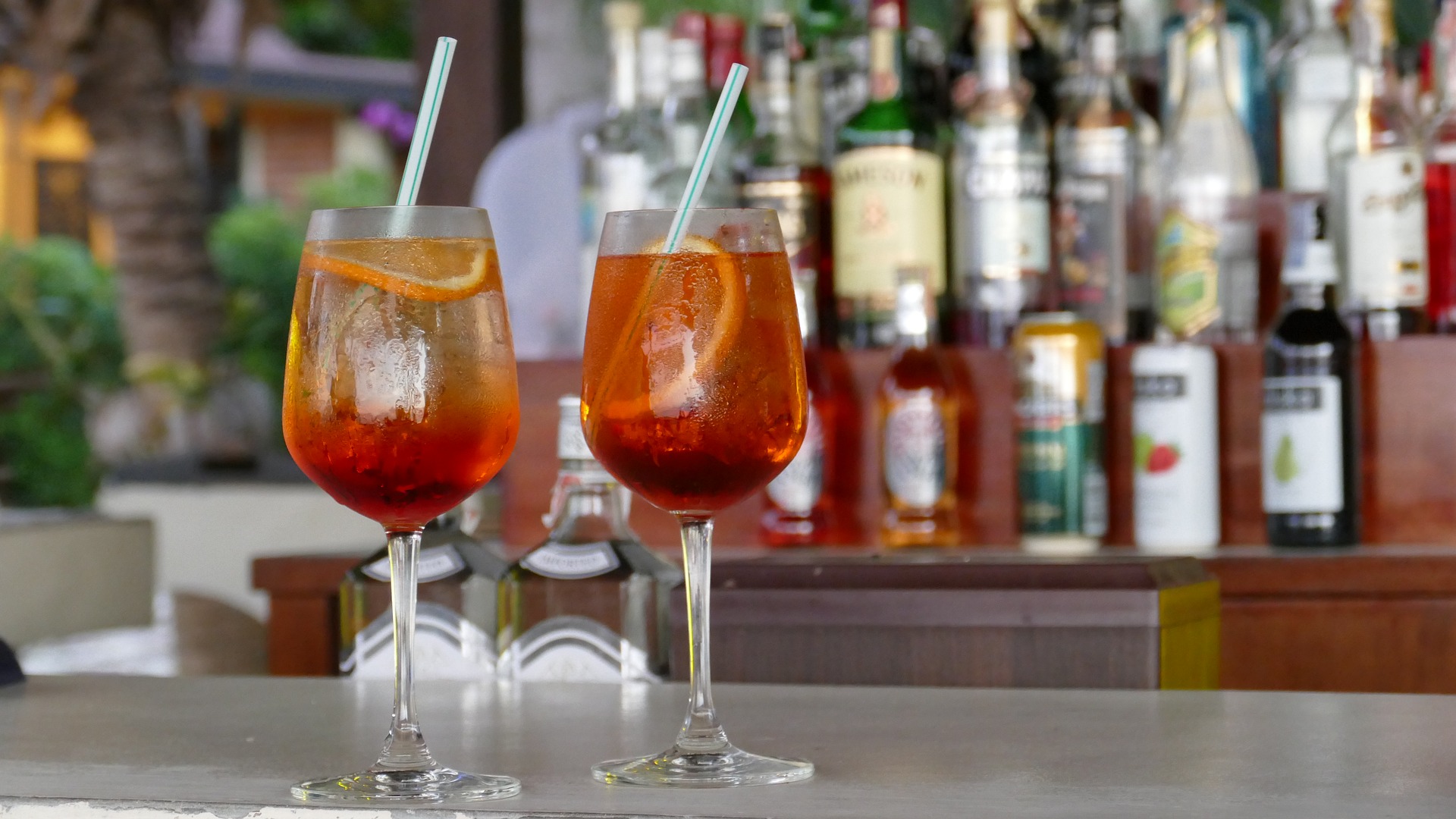 Specialty drinks
Specialty drinks
Margarita Glass
A margarita glasses can make any party a success! These glasses were traditionally welled. This means that the bowl is made on several different levels. However, margarita glasses have a wider bowl on top of this narrow outpouching. Margarita glasses can be found in many different colors, just like martini glasses or other types of a cocktail glass.
Hurricane Glass
Presentation is everything. A hurricane glass’s pleasant curve can add flair to any cocktail’s presentation. This glass, which is usually 20 ounces in size, is larger than the average hurricane glass and was named after Hurricane cocktail, which originated in New Orleans. You can have rum, juice, or grenadine.
Poco Grande
The Poco Grande glass has a similar design to the hurricane glass but is shorter and more compact. It’s ideal for frozen and blended drinks such as Pina Coladas or daiquiris. This glass is a great way to add a decorative touch to any drink at your home bar.
Copper Mug
The Moscow Mule is a drink you may be familiar with. Vodka, ginger ale, and all its spices, as well as lime juice – just reading these ingredients might evoke a nostalgic association with this popular drink. The copper mug is just as important to the Moscow Mule’s history. It has been serving Moscow Mules since the beginning. The copper mug helps to keep the drink cool, while the handle keeps the drinker’s hands warm. Some people even believe that copper enhances the taste of the drink. We’ll let you decide.
Punch Cup
Punch cups are usually smaller because most punches contain alcohol. Punch cups are ideal for serving drinks such as egg nog and other creative concoctions in small portions. The handle may be attached to these cups to keep the heat from reducing the refreshing coolness of chilled punches.
Sling
The tall, narrow cocktail glass has a long stem and a broad base. This glass is ideal for mixing mixed drinks, especially the Singapore Sling. A highball glass can also be used to hold other beverages. Some beer enthusiasts even use the sling glass to present a lambic beer.
Julep Cup
The Moscow Mule doesn’t taste the same if it’s not served from a copper cup, but the Kentucky Derby’s famous Mint Julep would look drab without a traditional tin Julep or silver Julep. The Julep cup’s design helps insulate crushed or shaved Ice on hot Kentucky afternoons.
Absinthe Glass
These stemmed glasses, which are short and stemmed, were designed to be used for absinthe serving. They have a reservoir at bottom of the bowl that allows bartenders or mixologists to pour the right amount. For a more tasty drink, the glass will retain any water or sugar that is added to the absinthe.
Grappa
Grappa glasses were named after the beverage they were meant to hold, just like other glasses made for specific beverages. Grappa is a high-alcohol drink that is made from distilled wine remnants. It is therefore well-suited for being held on a long stem. The grappa glass is a blend of champagne and tulip-shaped glass. It has a slim bowl and flared rim.
Whiskey and Bourbon
Nosing
Wine glasses have a shorter stem than noshing glasses. The bowl’s base is usually wider than its top, which is unlike wine glasses. These glasses are known as “tulip-shaped” because they curve inward from the bowl’s base to its tip. This design is ideal for bringing whiskey and bourbon aromas to the nose. Sometimes, the rim flares to let some of the aromas escape the glass. This allows the user to take a sip from the glass.
Glencairn Whiskey glass
These glasses are the official whiskey glasses. They were designed by Scotland’s Glencairn Crystal Ltd. For a pleasant and efficient sipping experience, the tulip shape with a solid base provides the aroma to your nose.
Sour Glass
A sour glass is a smaller version than a champagne glass. Although the stem and narrow bowl of the sour glass are smaller than those of champagne, they are both similar enough to be used as a substitute. These glasses, also known as Delmonico glasses, are great for serving whiskey sours or other sour cocktails.
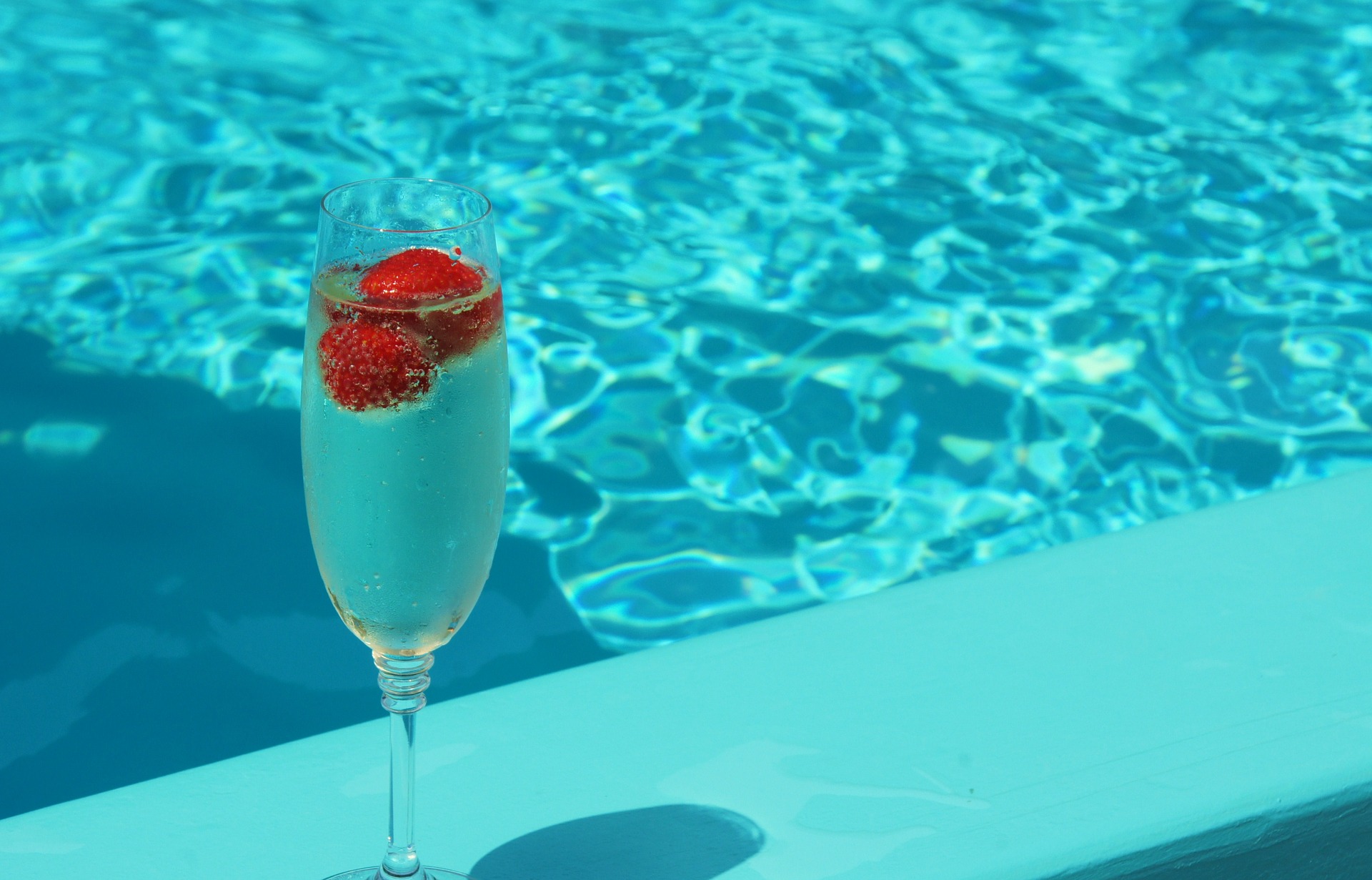 Glasses for Neat Liquor
Glasses for Neat Liquor
Shot Glass
There are many types of shot glasses, and they come in as many different flavors as liquor. But that’s what makes them so fun! Shot glasses come in a variety of sizes, including small, tall, narrow, sturdy, and slim. They are typically available in sizes between 1 and 2 ounces, which is the perfect volume to have a quick glass of liquor without any mixers. For creating fun shots with mixed liquors and other ingredients, tall shot glasses are great.
Brandy Snifter
The stems of snifter glasses are shorter, which makes it easier for drinkers to hold the bowl’s rounded bottom in their hands. The brandy snifter is different from other glasses that have a longer stem to keep the warm heat of the drinker’s hands from ruining chilled cocktails or wine. The design of this brandy snifter encourages drinkers’ body heat to transfer into the liquid inside. Additionally, the round bowl invites thoughtful swirling and sniffing.
Balloon glass
A balloon glass, which is another name for brandy snifter or brandy snifter is a popular choice for anyone who wants to fully experience the qualities of fine cognac and brandy.
Wobble
The wobble glass is the same as the balloon glass but it’s a much more entertaining variation! A wobble glass, which is similar to a top that’s leaned against the ground after spinning, is a stemless variant of the balloon glass. It can “wobble”, from the place it’s placed on a flat surface. The glass should be filled with the right amount of liquid to ensure it is safe from spillage. Additionally, the fluid in the glass can help to aerate your drink and bring out the complex aromas of your favorite spirits.
Genever Tulip Glass
As you would expect, genever glasses were made for drinking genever, a Dutch gin that is flavored with Juniper. This glass can also be used to serve other types of Gin. It takes the tulip shape often used in cocktail glasses to a whole new level. These glasses are more dramatic than other tulip glass because of their curvature, especially the flared rim.
Liqueur
Pousse Cafe
Ideal for small amounts (usually four ounces or less) of liqueur or layered beverages, these glasses stand atop a stem in order to keep carefully created drinks temperature-controlled and delicious. The bowl is narrow at the top and flared at its base, similar to many cocktail glasses’ tulip shape.
Cordial Glass
These glasses look like shot glasses and hold 2 oz of liquid. The two-ounce volume was chosen to be used for sweet liqueurs. These can be eaten as desserts after meals. They are similar to the Pousse Cafe and can be used to make layered drinks that can be enjoyed one at a time.
Irish Coffee Glass
The Irish coffee glass comes with a thick, insulating handle and thick material. It is ideal for hot beverages with Irish cream or other types of alcohol. The glass looks similar to a mug, but it is positioned on a thick stem with a sturdy base. These glasses have a rounded rim to hold cream toppings like whipped cream or foam.
Port/London Dock Glass
These stemmed glasses are short and handled. They look very similar to the Irish coffee cup. They are great for serving dessert wines such as port and other types of liquor.
Aesthetic glassware
Milkshake
The long, tapered curves of these milkshake glasses are reminiscent of American diners. Their steady base and smooth contours can make anyone smile. These glasses are great for milkshake cocktails and blended drinks. They look even better when topped with a straw and a cherry!
Tiki Mug
Tiki mugs can be used to make tropical cocktails and add authenticity to outdoor events. There are many tiki glasses available in different colors, so it is rare to find two identical tiki glasses. These glasses are perfect for hosting themed parties or serving island-inspired drinks with a little more flair.
Jam Jar
You’re likely to find many DIY resources that include recycling jam jars. You can also serve cocktails in jam jars (also known as mason jars). These jars have a warm, cozy feel that invites drinkers to relax and enjoy their alcoholic iced lemonades or muddled mint mixes.
Goblet Glass
A goblet or banquet glasses, as they are sometimes called, is a versatile piece that looks elegant or thoughtful when used in a table setting. While there are many stem lengths for goblet glasses, their hallmark is the large, round bowl that can be used to serve anything, from ice water to your favorite cocktails.
There are many types of cocktail glasses.
It’s all over! This is it! It’s not necessary to keep a collection of all these glasses around, and your bar may look crowded if you did. However, a few basic staples can make your guests’ cocktail-drinking experience more enjoyable.
It’s possible to think about it. Beer in a wine glass? It’s not a good idea! It will not only look strange, but it could also be a way to cheat your guests (and you) out of a great drinking experience. These glasses can be used to enhance the drink. For example, a fine whiskey would not be served in a plastic cup. The right glasses and the appropriate shapes of glass allow for a rich, full-bodied drinking experience. Everything will taste better, from color to smell to taste to temperature.
The presentation can also make all the difference in a cocktail’s quality. If the drink is not presented correctly, it can lose its charm, especially for drinks like layered cocktails and blended beverages.
Some glasses can be used for measuring and building drinks. A small amount of liquor can lead to a heavy drink that is easy to spill or difficult to transport when you’re mingling with others.
You’re convinced to buy new glassware? Then check out these sections for more information about materials, features and styles you might want to consider when making your own set. Cocktail glasses.
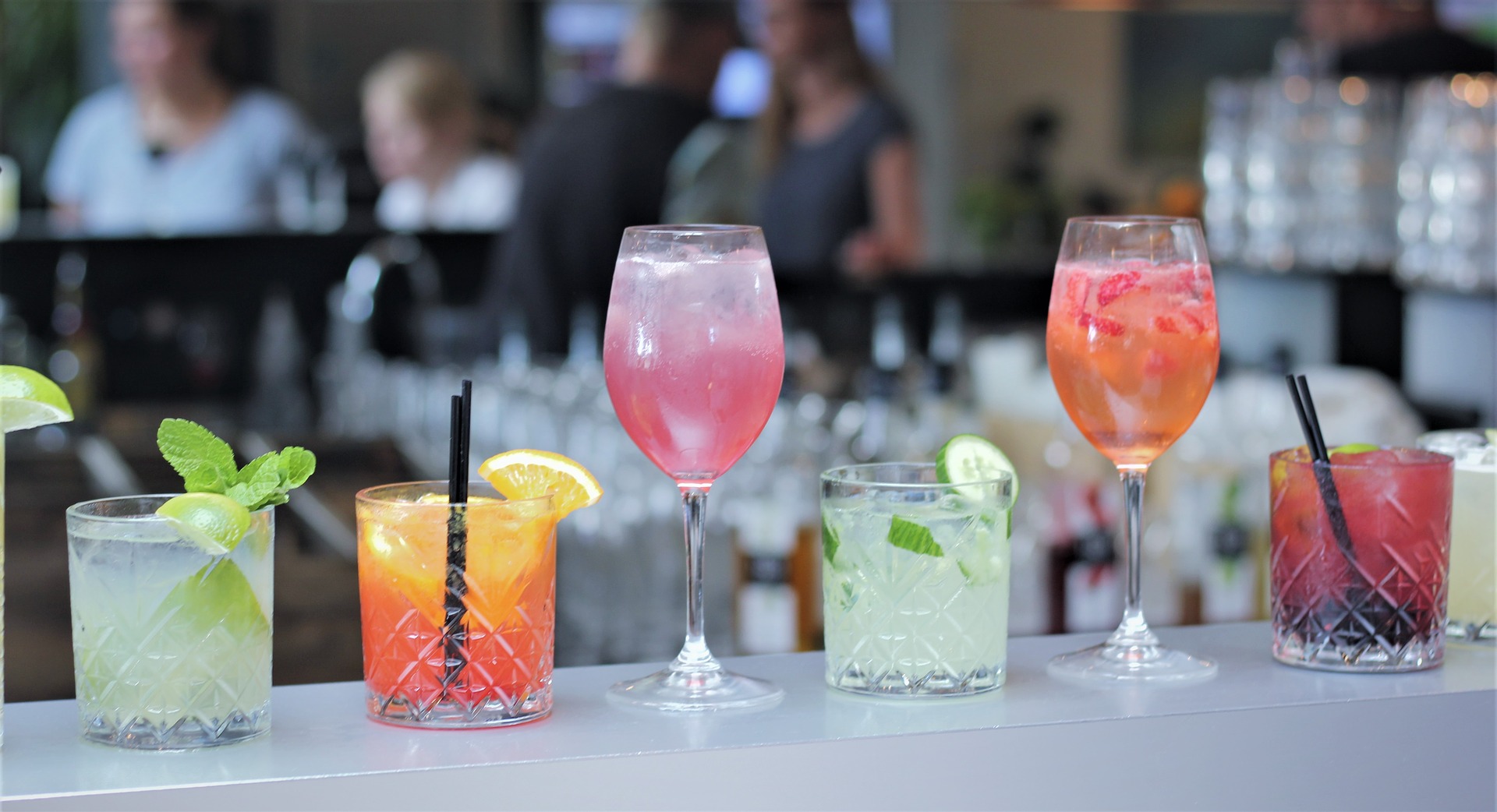 Cocktail Glass Materials
Cocktail Glass Materials
You’ll have noticed that cocktail glasses come with a range of materials. You can serve liquor, mixed drinks, or beer in a variety of materials, including tin, copper, silver, and glasses of different thicknesses, crystal, as well as plastic. Some of these materials can be dictated by the drink they are meant to hold (e.g. copper Moscow Mule mugs or tin Julep cup), but most serving glasses can be interchangeable depending on what you need.
Acrylic is an alternative to glass if you don’t want your serving vessels to break in casual settings. The high-quality, but less durable, polycarbonate is a great alternative to glass. This can be especially useful for people who intend on using glasses in a chaotic environment such as a noisy outdoor party or reception.
Glass has its own variations. A pint glass for beer will have a different thickness than a wine or champagne flute. Tin and copper, which are thicker glasses, are better suited to insulating warm beverages such as Irish coffee or keeping cold beverages as chilled as possible.
Cocktail glass features
Even if you are looking for a specific “genre” or type of glassware, not all glassware will be equal. You might be wondering why the price ranges for glassware to accent your home bar are so different when you start your search. You’ll be able to see the descriptions and labels of the glassware that you are considering and begin to understand why.
When shopping for new cocktail glasses, features such as personalization, decoration, quality, and dishwasher-safe designations are important. Instead of getting overwhelmed by all the options for different types of cocktail glasses, look at these as opportunities.
Ask yourself these questions while you shop:
- How many do I need?
- Are you looking for a matching set of clothes? Do you want a matching set?
- Do the colors and designs of the glassware need to match a specific theme?
- Do you consider personalization to be important? This is especially useful for people who want to create a brand for their home bartending skills or for gifting set glassware to mark a special occasion.
- What materials should I avoid? For example, you want crystal glasses that are free of lead. This should be guaranteed by the company that you buy from.
- Do glasses need to be safe for the dishwasher? This convenience is a huge plus. Make sure you never put your glassware in the dishwasher without checking that it can withstand high temperatures.
Cocktail Glass Styles
Once you have chosen the material and features that you like, it is time to shop! You’re not done with your research and narrowing down your choices to glasses that suit your preferences. Cocktail glasses can be viewed as conversation pieces, art, or decorations. Craft artisans often create cocktail glassware with their own creativity and flair. You are likely to find a specific style of cocktail glasses that you like for your next event.
For example, you might prefer a classic or elegant design, or you may want to stand out and buy the most unique glasses possible. There are also modern designs available for cocktail glasses. They come in traditional colors, as well as in brighter, shinier colors, for more glamorous events. Whatever your party theme, or home decor, there are sure to be a set of cocktail glasses that will suit your needs.
If you plan to display your glassware on a tray at home, or for a themed event, you may want to consider glass styles. For a casual drinking experience or decoration of your bar, you can choose from simpler but more crafty sets.
Summarising
You can make it easier to choose from the many types of glassware that are available by categorizing your needs. Don’t worry too much about how you serve your drinks. It’s important that you use different types of glassware. However, it doesn’t mean you have to stop using them if they don’t work for your drink.

